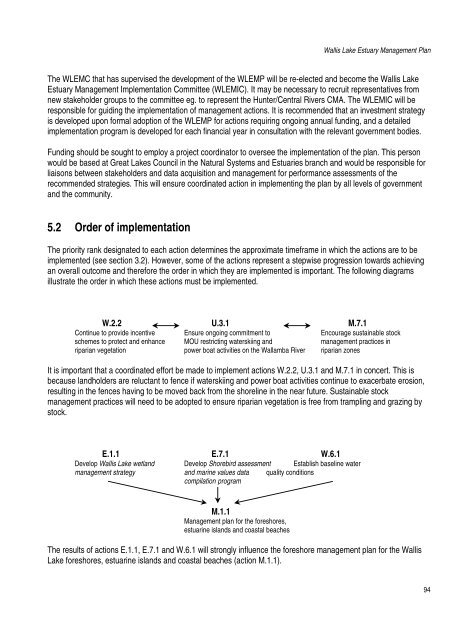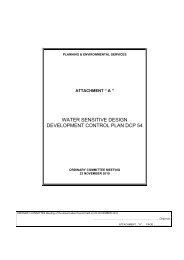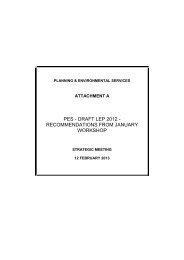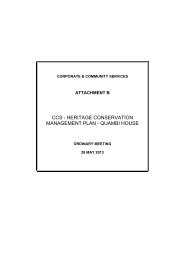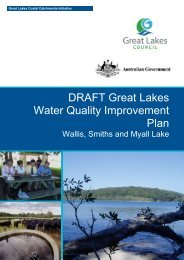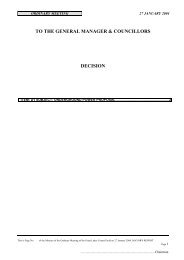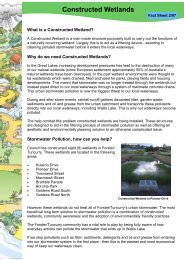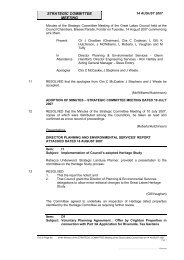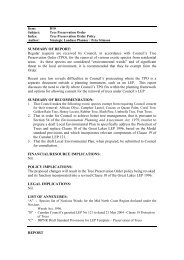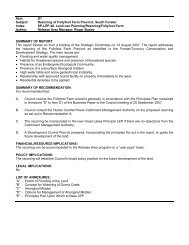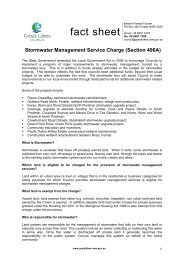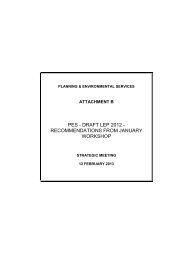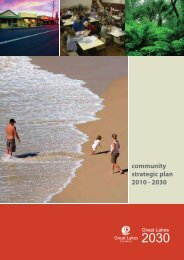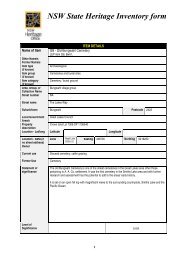13.2 The Wallis Lake Estuary Management Committee - Great Lakes ...
13.2 The Wallis Lake Estuary Management Committee - Great Lakes ...
13.2 The Wallis Lake Estuary Management Committee - Great Lakes ...
You also want an ePaper? Increase the reach of your titles
YUMPU automatically turns print PDFs into web optimized ePapers that Google loves.
<strong>Wallis</strong> <strong>Lake</strong> <strong>Estuary</strong> <strong>Management</strong> Plan<br />
<strong>The</strong> WLEMC that has supervised the development of the WLEMP will be re-elected and become the <strong>Wallis</strong> <strong>Lake</strong><br />
<strong>Estuary</strong> <strong>Management</strong> Implementation <strong>Committee</strong> (WLEMIC). It may be necessary to recruit representatives from<br />
new stakeholder groups to the committee eg. to represent the Hunter/Central Rivers CMA. <strong>The</strong> WLEMIC will be<br />
responsible for guiding the implementation of management actions. It is recommended that an investment strategy<br />
is developed upon formal adoption of the WLEMP for actions requiring ongoing annual funding, and a detailed<br />
implementation program is developed for each financial year in consultation with the relevant government bodies.<br />
Funding should be sought to employ a project coordinator to oversee the implementation of the plan. This person<br />
would be based at <strong>Great</strong> <strong>Lake</strong>s Council in the Natural Systems and Estuaries branch and would be responsible for<br />
liaisons between stakeholders and data acquisition and management for performance assessments of the<br />
recommended strategies. This will ensure coordinated action in implementing the plan by all levels of government<br />
and the community.<br />
5.2 Order of implementation<br />
<strong>The</strong> priority rank designated to each action determines the approximate timeframe in which the actions are to be<br />
implemented (see section 3.2). However, some of the actions represent a stepwise progression towards achieving<br />
an overall outcome and therefore the order in which they are implemented is important. <strong>The</strong> following diagrams<br />
illustrate the order in which these actions must be implemented.<br />
W.2.2 U.3.1 M.7.1<br />
Continue to provide incentive Ensure ongoing commitment to Encourage sustainable stock<br />
schemes to protect and enhance MOU restricting waterskiing and management practices in<br />
riparian vegetation power boat activities on the Wallamba River riparian zones<br />
It is important that a coordinated effort be made to implement actions W.2.2, U.3.1 and M.7.1 in concert. This is<br />
because landholders are reluctant to fence if waterskiing and power boat activities continue to exacerbate erosion,<br />
resulting in the fences having to be moved back from the shoreline in the near future. Sustainable stock<br />
management practices will need to be adopted to ensure riparian vegetation is free from trampling and grazing by<br />
stock.<br />
E.1.1 E.7.1 W.6.1<br />
Develop <strong>Wallis</strong> <strong>Lake</strong> wetland Develop Shorebird assessment Establish baseline water<br />
management strategy and marine values data quality conditions<br />
compilation program<br />
M.1.1<br />
<strong>Management</strong> plan for the foreshores,<br />
estuarine islands and coastal beaches<br />
<strong>The</strong> results of actions E.1.1, E.7.1 and W.6.1 will strongly influence the foreshore management plan for the <strong>Wallis</strong><br />
<strong>Lake</strong> foreshores, estuarine islands and coastal beaches (action M.1.1).<br />
94


